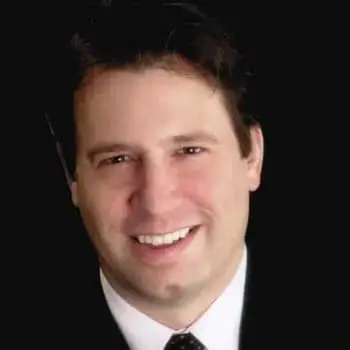DMT is a potent and unsafe hallucinogen drug. It is not inherently addictive but users can develop a psychological dependence. Learn the facts about this unusual drug.
DMT (N,N-dimethyltryptamine) is a chemical that is found naturally in plants, animals and humans. It stands out among other hallucinogens because of its shorter duration of action, and is preferentially used by people who don’t wish to experience the prolonged effects of other hallucinogens, such as LSD.
DMT drug use is not common; the DEA reports 500 to 600 cases of lab-confirmed DMT use annually in the United States. The drug is usually distributed through internet marketplaces rather than by street-level dealers. Some people travel to South America to participate in DMT-based ceremonies with the indigenous people.
What Is DMT?
DMT is a hallucinogen drug that can be produced in a lab but is found naturally in a number of plant and animal sources. It has been used for many centuries by native people in the Amazon Basin, where it is found in significant concentrations in some of the native plant-life.
Hallucinogens are drugs that produce a psychotic state in the user, sometimes with a mild euphoric effect.
Treatment Can Be Life Changing. Reach out today.

DMT induces the following effects, known as a trip:
- Visual and auditory hallucinations
- Distortions of body image
- Distortions of spatial perception
- Disturbances of thought
- Euphoria
What Is DMT Used For?
DMT has no approved uses in the United States. However, a certain religious group (the Santo Daime Church) in the United States have managed to win the rights in court to use DMT in their services based on religious freedom.
DMT is used for its hallucinogenic effects for spiritual reasons (users believe that their psychosis amounts to a meaningful vision, or mental clarity) or for simply seeking a “trip.” The Amazonian indigenous people continue to use it for their shamanic rituals, some Brazilian churches use it in their sacraments for inducing religious experiences and it has spread to many other countries for use in a similar capacity.
Although researchers can apply for special permission to use DMT for clinical trials, the drug has been studied very little due to its legal status. However, there is very limited, preliminary suggestion within the science community that DMT may be useful for treating addictions, obsessive-compulsive disorder, prisoner recidivism and treatment-resistant depression. Given the unsafe nature of hallucinogen use, the research community is cautious about considering their potential medical uses.
DMT Classification
DMT is a Schedule I drug in the United States, meaning that it has no approved medical uses and has addiction potential. That means that it is illegal to possess, buy, sell or manufacture DMT.
DMT drug classification as a hallucinogen can be further broken down. There are two types of hallucinogen drugs:
- Dissociatives: The individual feels “out of body” and disconnected from the real world feels out of control.
- Classic hallucinogens: Hallucinations, which are visual, auditory or touch sensations that are not real but the individual believes they are real; other psychosis symptoms such as paranoia, disorganized thought and loss of touch with reality.
DMT is a classic hallucinogen drug, similar to other classic hallucinogens (LSD, psilocybin, peyote and 251-NBOMe). Dissociative drugs include PCP, ketamine, dextromethorphan and salvia.
DMT Dosage and Administration
DMT is usually snorted, smoked or injected because it is not well absorbed into the system when taken orally. However, when DMT is taken orally with a type of drug known as an MAOI (monoamine oxidase inhibitor) it will have the desired effect.
Native peoples of the Amazon Basin make a brewed drink called “ayahuasca” that contains DMT. Ayahuasca is made by boiling certain vines and plant ingredients (that happen to contain a naturally occurring MAOI) along with plants containing DMT. The drink is used by native people of the Amazon basin as part of certain traditional spiritual ceremonies.
The average DMT dose depends upon the route of administration. Since the drug is illegal and has no medical uses, the average doses are approximate:
- Intravenous: in clinical studies, DMT had a full hallucinogenic effect at doses of 0.2 mg per Kg of body weight
- Smoked: 30 mg to 150 mg
- Brewed: 35 mg to 75 mg
Because DMT is very harsh to smoke, it is usually mixed with herbs and other plants, in which case the mixture is known as “changa.” There is no set recipe for changa, the plants used and the amount of DMT used vary.
When snorted, DMT is ground into a fine powder and used as a snuff. DMT can also be prepared for intravenous or intramuscular injection, but this is an especially dangerous practice.
Dangers of Using DMT While Pregnant
DMT is not a well-understood drug and human safety data for using DMT while pregnant is lacking. However, animal studies have suggested the potential for harm to the fetus and child later in life.
Smoking DMT while pregnant or drinking the ayahuasca brew may be especially dangerous because of the other added ingredients.
What Does DMT Look Like?
In its highly purified form, DMT appears as tiny clear or white needle-like crystals that sparkle. Ayahuasca looks like a clear but cloudy greenish tea, sometimes with plant debris floating in it. It is made in a variety of ways with different ingredients so it may change in appearance between users.
DMT Street Names
DMT street names appear to be derived from its acronym, as well as the fact that the drug’s hallucinogenic effects are usually rapid onset and last about 45 minutes:
- Dimitri
- The Spirit Molecule
- Fantasia
- Business man’s trip
- Forty-five-minute trip
- Business man’s special
DMT Side Effects
The hallucinogenic effects of DMT are actually a drug-induced psychosis characterized by hallucinations, paranoia and odd, irrational behavior. Because of this factor, a “trip-sitter” is recommended to attempt to prevent any harmful behaviors. A number of fatalities have occurred when on a DMT trip. DMT use in unsafe at any dose.
DMT drug side effects include serious cross-reactions with some commonly used medications, including:
- Blood pressure medications
- Antidepressants
- Other illicit drugs, especially cocaine
- Some complementary medicines
Even some preserved or aged foods should be avoided due to potential for serious cross-reaction with DMT.
Long-Term Side Effects
Long-term negative side effects of DMT are known to occur after use of other classic hallucinogens as well:
- Persistent Psychosis: This is an ongoing psychosis that persists long after the drug has worn off. The individual essentially becomes schizophrenic.
- Hallucinogen Persisting Perception Disorder (HPDD): This is a sudden, unpredictable flashback of hallucinations and other psychosis symptoms typical of DMT. The disorder may last months or years after the drug was used.
The use of hallucinogens such as DMT may unmask latent mental health disorders in people with pre-existing conditions or a genetic predisposition.
Short-Term Side Effects
Like other hallucinogens, DMT produces a mild stimulant effect, resulting in:
- Elevated blood pressure and heart rate
- Dilation of the pupils (unlike opioids, which cause constriction)
- Agitation
- Anxiety
Other common short-term side effects of DMT include:
- Vomiting and diarrhea
- Dry mouth
- Diaphoresis
- Bizarre and high-risk behaviors
- Psychosis
- Dizziness
- Rapid rhythmic eye movements
- Chest pain
- Overwhelming fright from the “trip,” possibly lasting days
- At higher doses, DMT may cause seizures, respiratory arrest and coma
There are also a variety of risks from the various chemicals that are used with DMT, especially in making changa or ayahuasca. Serious illness, injury, and death have been reported in people who travel to Brazil to attend ayahuasca ceremonies.
How Long Does DMT Stay in Your System?
There are no standard, routine drug tests that show DMT usage. However, if special testing is available the drug may be detected in some body tissues:
- Blood: DMT is only detectable in the blood for one hour, so blood tests are rarely used
- Urine: Less than 1% of DMT ends up in the urine, so this is an unreliable method for detecting the drug
- Hair: If available, hair testing for DMT will show even a single drug use for 90 days
- Breastmilk: Data on excretion in breast milk in humans is lacking, although it does appear to be excreted in breast milk in animal studies
How Addictive is DMT?
Some hallucinogens are addictive and some are not. Most are not known to cause obsessive drug seeking and do not cause significant withdrawal symptoms, but almost all have the addictive property of tolerance, which means that users require increasingly higher doses to achieve the same effect. DMT, however, may be less tolerance-producing than some of the other hallucinogens. An example of a non-addictive hallucinogen is LSD; PCP, on the other hand, is highly addictive.
DMT does not appear to be especially addictive. However, a psychological dependence can develop, where people repeatedly use the drug for its recreational effects. Like DMT, psilocybin (the hallucinogen in “magic mushrooms”) is not considered to be addictive, yet many people use the drug repeatedly.











